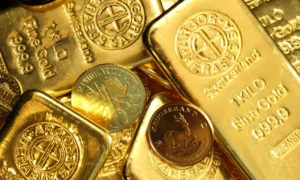Unlike paper money, coins, and other assets, gold has retained its worth over time. Gold is seen as a method for people to carry on and protect their riches from generation to generation. People have admired the precious metal’s remarkable characteristics since antiquity.
Buying gold has always been common for those who could afford it. Gold is easy to work with and imprinted as a coin since it doesn’t corrode and can be melted over a regular flame. Furthermore, unlike other elements, gold has a distinct and lovely hue.
The US Dollar’s Weakness
Despite the fact that the US dollar is one of the world’s most significant reserve currencies, when the dollar’s value declines against other currencies (as it did between 1998 and 2008) individuals typically turn to gold for protection. This often drives up gold prices. Between 1998 and 2008 the price of gold roughly quadrupled, reaching $1,000 per ounce in early 2008. The price of gold nearly tripled between 2008 and 2012, reaching beyond $2,000 per ounce. During that time the dollar fell due to a variety of factors, including the country’s massive budget and trade deficits as well as a large rise in the money supply.
Hedge Against Inflation
Because gold’s price tends to rise when the cost of living rises, it has historically been a good inflation hedge. During high-inflation times during the last 50 years, gold prices have soared while the stock market has plummeted. Because gold is valued in currency units when fiat money loses its purchasing power due to inflation, it tends to climb in tandem with everything else. Furthermore, because gold is seen as an excellent store of value, individuals may be enticed to purchase it if they perceive their local currency is losing value.
Deflationary Defense
Deflation is characterized as a time in which prices fall, corporate activity slows, and the economy is burdened by excessive debt — something that hasn’t happened since the Great Depression of the 1930s. A small degree of deflation occurred following the 2008 financial crisis in some parts of the world, but not as much as during the Great Depression. During the Great Depression, gold’s relative buying power increased while other prices plummeted. This is because people like to hoard cash and at the time the safest way to keep it was in gold and gold coins.
Uncertainty in Geopolitics
Gold keeps its worth not just in times of financial uncertainty but also in times of geopolitical instability. It’s known as the “crisis commodity” because when global tensions mount, people flock to it for its relative safety; during these periods, it frequently outperforms other assets. For example, gold prices have seen significant price changes this year as a result of the European Union issue. Its value rises the highest when people have less faith in their governments.
Supply Limitations
Since the 1990s, gold bullion sold from the vaults of global central banks has accounted for a large portion of the market’s supply. Global central bank selling slowed dramatically in 2008. Simultaneously, new gold production from mines has been dropping since 2000. Annual gold mining output declined from 2,573 metric tons in 2000 to 2,444 metric tons in 2007, according to BullionVault.com. (However, according to the U.S. Geological Survey, gold saw a rebound in production with output hitting nearly 2,700 metric tons in 2011.) A new mine might take anything from five to 10 years to get up and running. Gold prices rise as the supply of the precious metal is reduced.
Even investors who are primarily interested in growth rather than consistent income might profit from gold stocks with a history of high dividend payouts. When the sector is increasing, dividend-paying companies outperform non-dividend-paying stocks by almost twice as much. When the sector is falling, dividend-paying firms outperform non-dividend-paying stocks by nearly twice as much.


































